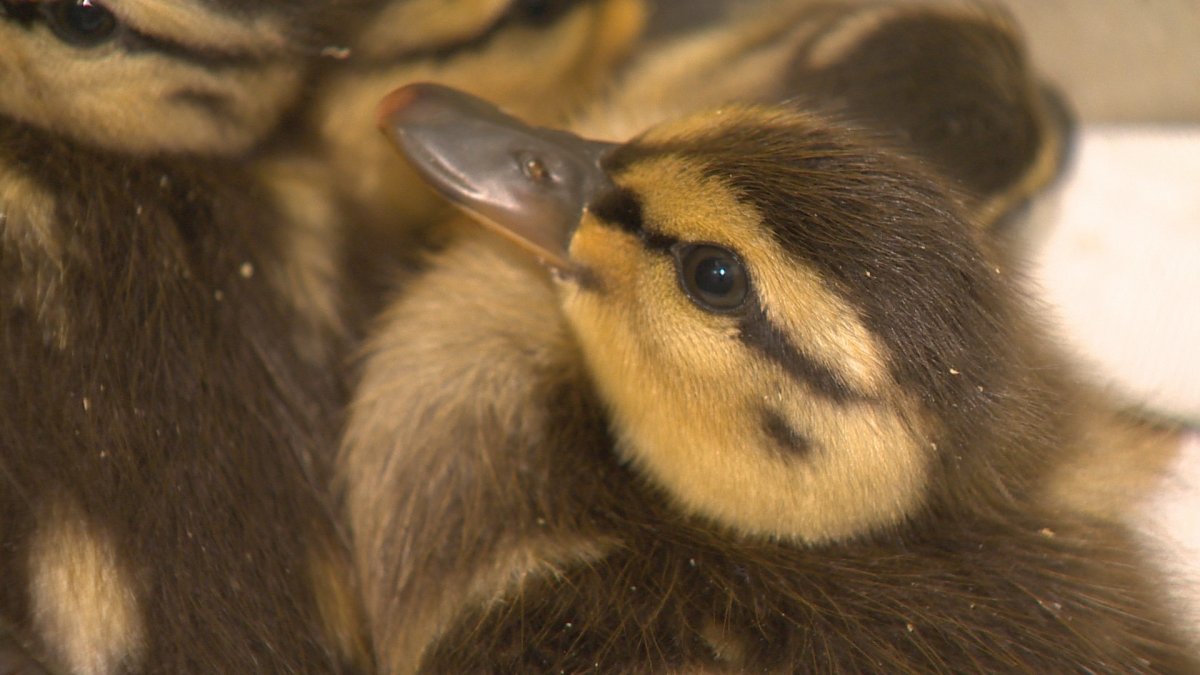Springtime is one of the busiest times of the year for the staff and volunteers at Hope for Wildlife.

The rehab, located in picturesque Seaforth, N.S., has been helping injured and orphaned wildlife for more than two decades.
READ: Mounties help deliver baby fawn after striking deer in Nova Scotia
So far this year, more than 120 baby raccoons have been brought to Hope for Wildlife.
About 30 of the babies were able to be reunited with their mothers, while a few sadly passed away. The remaining babies are now orphans and being cared for around the clock at the centre.
“I think a lot of people need to be educated or understand that the babies are out there, so don’t live trap a mom and take her way away and then the babies are orphaned, left behind,” said Hope Swinimer, founder of Hope for Wildlife.
READ MORE: Seeing a bobcat is rare, getting glamour shots is an even bigger treat
Swinimer said instead of trapping or killing a mother raccoon to get it off your property, try treating the raccoons like a tenant you don’t want.
“It’s much better to encourage the raccoons to move along and she’ll take her family unit with her,” said Swinimer.
“You can accomplish this with bright lights and a radio, kind of playing a base sound. They don’t like sound. They like dark, quiet spaces. So simply trying to make their habitats uncomfortable for them is enough to get them to leave your attic or your garage.”
WATCH: Hope for Wildlife is currently caring for influx of orphaned babies. Global’s Natasha Pace reports.

There’s more than just raccoons currently calling Hope for Wildlife home.
The facility is also housing a baby groundhog, two young seals and several fox pups. Dozens of baby squirrels, some that are just a few days old, are also being carefully cared for.
Swinimer said Hope for Wildlife is also full of birds. Most ducklings are brought to the rehab after their mothers are struck and killed by vehicles.
Some starlings make their way to the facility just after they hatch.
While you’re always encouraged to bring injured and orphaned wildlife to the rehab centre, Swinimer said it’s important to make sure that the babies are actually on their own, especially when it comes to birds.
“A lot of people don’t realize that almost all birds go from the nest to the ground. They’re called fledglings and they actually spend a good week on the ground learning to fly from the ground up,” said Swinimer.
“If you stand back and watch, you’ll often see the mom and dad come down and feed these young fledglings. It’s a very important part of their growing up, it’s when they learn to find their food and how to find their food and they’re still being closely surveyed by their mom and dad and cared for. So, leave them where they are.”
READ MORE: Film credit cuts could hurt us too: Hope for Wildlife
It’s hoped most of the babies will be released in the fall.
View a photo gallery of some of the babies at Hope for Wildlife taken by Global Videographer Cory McGraw.




















Comments